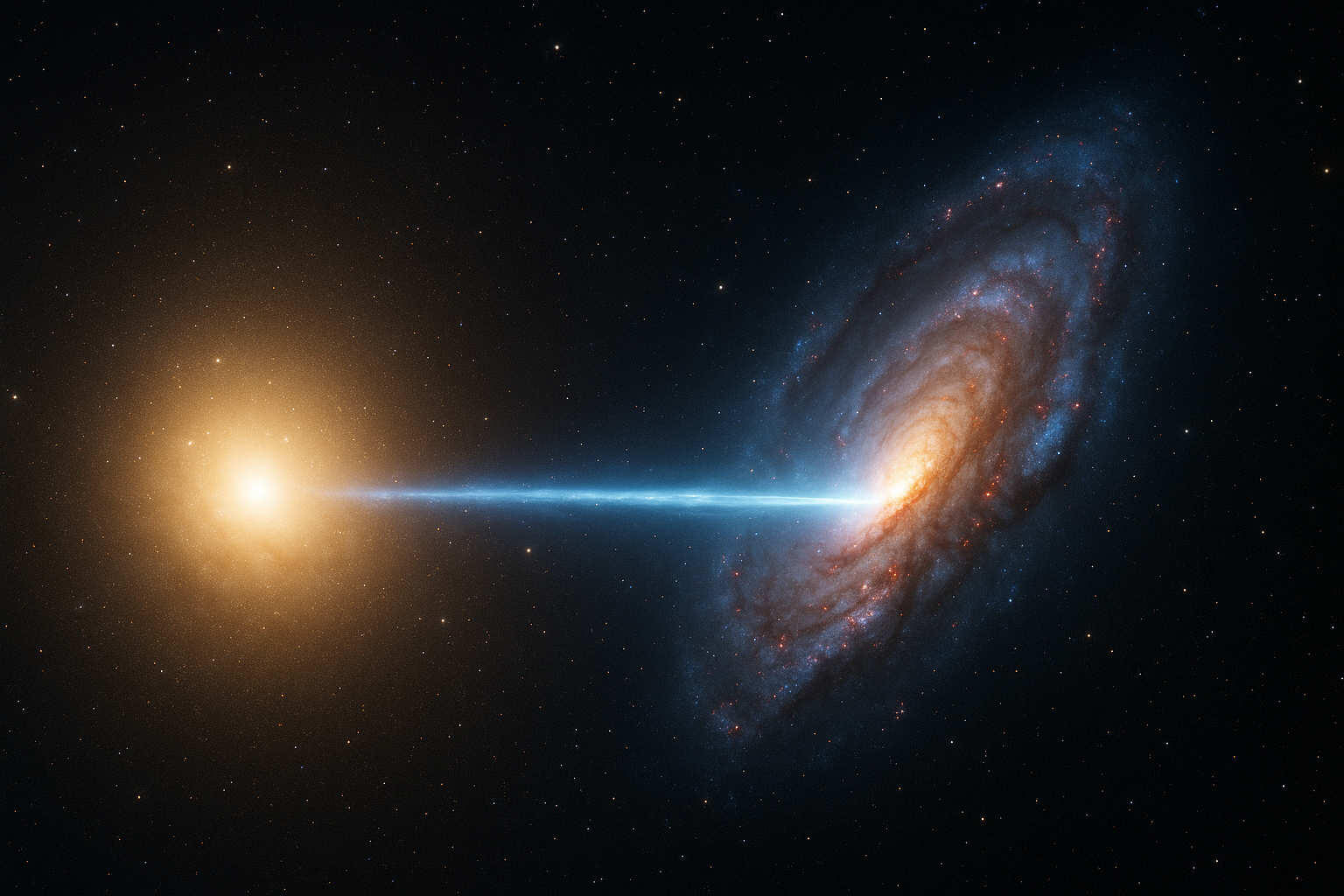Follow us on Google News (click on ☆)
Astronomers have observed a rare and spectacular phenomenon dating back over 11 billion years: a quasar, the hyperactive core of a distant galaxy, emits radiation so intense that it profoundly disrupts a neighboring galaxy, to the point of blocking the birth of new stars.

This quasar, studied by an international team including researchers from the Ioffe Institute in Saint Petersburg and the Paris Institute of Astrophysics, is located in a system of two merging galaxies. The observation was made possible thanks to instruments from the Very Large Telescope (VLT) and the ALMA radio observatory, both located in Chile.
The two galaxies are very close to each other, separated by a few thousand light-years, and are rapidly approaching. One of them hosts a quasar: a giant black hole surrounded by gas that emits colossal energy. By aligning with the axis of this "cosmic ray," researchers were able to analyze the effects of the radiation on the gas in the neighboring galaxy.
They discovered pockets of extremely dense gas, much smaller than what is typically observed in such galaxies. These clouds are exposed to ultraviolet radiation roughly a thousand times more intense than that of our own galaxy. This radiation destroys most of the surrounding gas, leaving only tiny zones dense enough to withstand it.
But these zones are too small to allow star formation. In other words, the quasar acts like a "death ray," preventing the neighboring galaxy from producing new stars by radically reshaping its gas.

The quasar J0125 appears as a point source in optical imaging. High-resolution imaging with ALMA reveals that it is actually two galaxies merging, one of them (on the right) containing the quasar. Absorption spectroscopy with the Very Large Telescope allows the study of the gas characteristics traversed by the quasar's light.
© Pasquier Noterdaeme
This discovery provides a better understanding of how quasars can influence the evolution of surrounding galaxies by directly blocking star formation in their immediate vicinity. This is the first time such a phenomenon has been observed on such a fine scale.